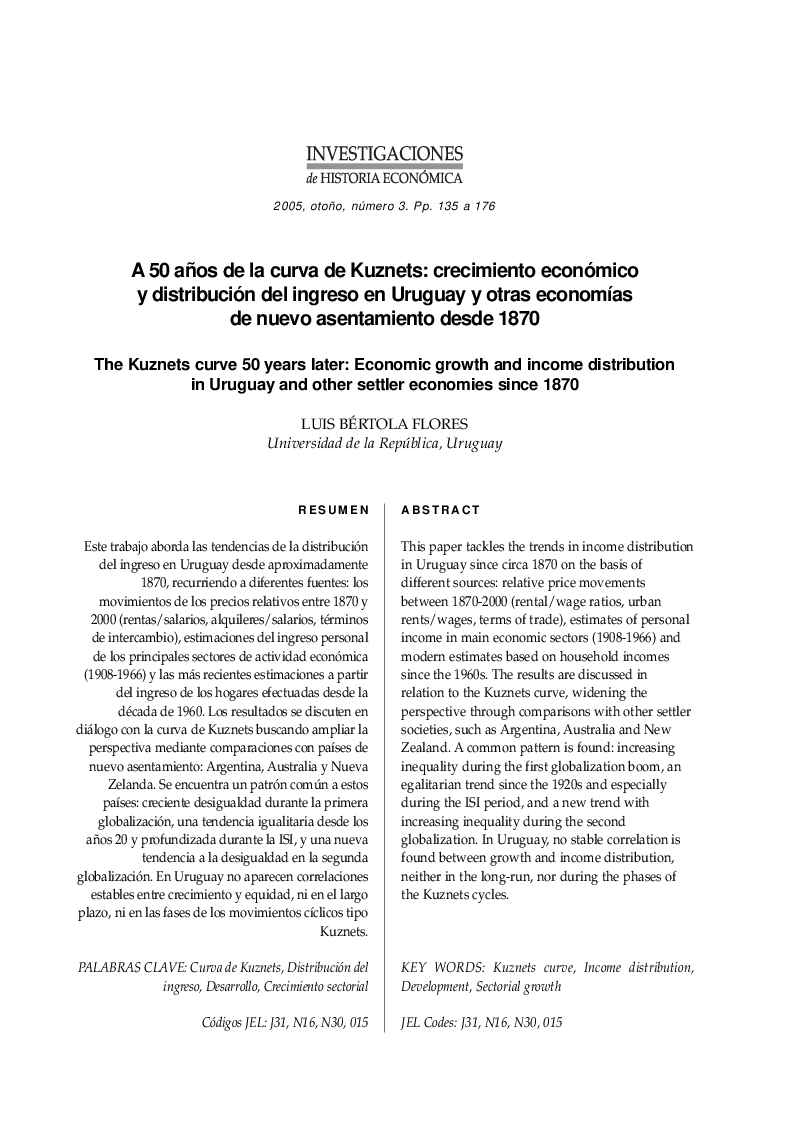| Article ID | Journal | Published Year | Pages | File Type |
|---|---|---|---|---|
| 10528510 | Investigaciones de Historia Económica - Economic History Research | 2005 | 42 Pages |
Abstract
This paper tackles the trends in income distribution in Uruguay since circa 1870 on the basis of different sources: relative price movements between 1870-2000 (rental/wage ratios, urban rents/wages, terms of trade), estimates of personal income in main economic sectors (1908-1966) and modern estimates based on household incomes since the 1960s. The results are discussed in relation to the Kuznets curve, widening the perspective through comparisons with other settler societies, such as Argentina, Australia and New Zealand. A common pattern is found: increasing inequality during the first globalization boom, an egalitarian trend since the 1920s and especially during the ISI period, and a new trend with increasing inequality during the second globalization. In Uruguay, no stable correlation is found between growth and income distribution, neither in the long-run, nor during the phases of the Kuznets cycles.
Related Topics
Social Sciences and Humanities
Arts and Humanities
History
Authors
Luis Bértola Flores,
